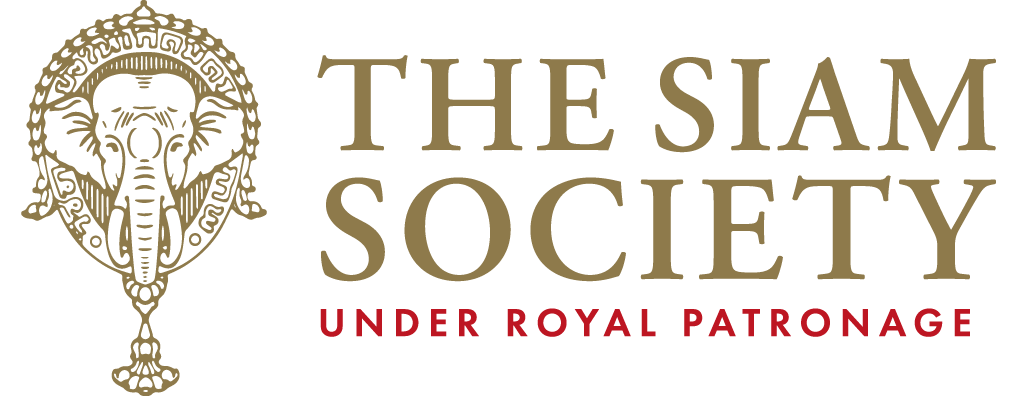A Visit to Ratchaburi Province: Archaeological Sites, Museums, Ancient Temples, Exceptionally Beautiful Mural Paintings and Old Teak Building
Ratchaburi is only 100 km from Bangkok with its history dating back to the early Dvaravati period. The city lies on the banks of the Mae Klong River and is connected to the rest of Central Thailand by canals. It was an important commercial centre, and it has remained so until today despite the silting. Wat Mahathat, the most important Wat in Ratchaburi was founded in the Dvaravati period and altered into a Khmer-style temple in the 13th century and was restored again during the Ayutthaya and Rattanakosin periods. The temple is located in the centre of the town.
The Ratchaburi National Museum is housed in the former town hall which was built in the 1920s. Prehistoric and later artefacts from the area are on display, including stucco fragments from the Dvaravati site of Muang Khu Bua. The corner of a stupa from the site has also been recreated. Among the Khmer objects is a magnificent 13th-century sandstone torso of Avalokiteshvara. In other rooms, there are examples of art objects from later period, a collection of textiles, basketry, some water jars found from the river bed, and information on the ethnic minorities who live in the province. According to the Ramkhamhaeng Stele, in the last decade of the 13th century, Ratchaburi was incorporated by King Ram Khamhang into Sukhothai Kingdom. It later came under the rule of Ayutthaya.
The most important surviving monument of the 7th-century to 8th-century Dvaravati site of Muang Khu Bua is the large raised base of a Wihan at Wat Khlong Suwankhiri, located 7 km away from the town centre to the south. There is a flight of steps at the east leading up to the platform. Among the other over 50 monuments found scattered across the 3 square km of the site, little still remains there except stupa bases. The stucco decoration and artefacts from the site are now in the Ratchaburi National Museum.
Wat Khongkharam in Photharam district. Inside the ubosot, there are exceptionally fine murals that date back to the reign of King Rama III. The land on which the temple stands was bestowed on the Mon people by King Rama I and became a centre for Mon culture in the Ratchaburi area. In the temple, there are many large old, teak raised kutis with carved shutters and architraves known as the “seven-room kuti”. Beside it to the left is the “nine-room kuti”. The temple is also located on the bank of the Mae Klong River.
Wat Muang Folk Museum is a small museum, located in Wat Muang. Established in 1993, it contains very interesting exhibits relating to the Mon people, who historically made up a substantial minority of the area’s population. Some most important artefacts include fragile manuscripts, hand-painted wall hangings, and pottery recovered from the area and the river bed. The information about the Mon people and their customs is also being displayed.
When
Leader
Mr Euayporn Kerdchouay
Senior Consultant of The Siam Society
Booking
The tentative programme will be as follows:
| Saturday, 29 June 2024: Bangkok – Ratchaburi – Bangkok | ||
| –
07:30 |
Meet at The Siam Society, 131 Asoke Montri Road, Sukhumvit 21, Bangkok.
Depart The Siam Society to Ratchaburi province by bus |
|
| – | Visit the Ratchaburi National Museum | |
| – | Visit Wat Mahathat, the most important temple in Ratchaburi province | |
| Noon | Lunch at a local restaurant | |
| Afternoon:
– – |
Visit the most important surviving monuments of Dvaravati sites at Wat Khlong Suwankhiri, an archaeological site at Khao Ngu Stone Park, and visit Fa Tho Cave, which contains a large stucco relief of the reclining Buddha and relief of three female deities.
Then proceed to the Photaram district Visit Wat Khongkharam and Wat Muang Folk Museum |
|
| 17:30 | Depart back to Bangkok | |
| 19:30 | Arrive at The Siam Society | |
|
The Siam Society reserves the right to change the programme as necessary. |
||
Important notes:
– The Siam Society may utilise photos taken from study trips, lectures, performances, and other activities as part of its public relations and marketing communication campaign. These photos, which may sometimes contain image(s) of activity participants, can also be featured on The Society’s website and other online social media channels.
Booking:
The contribution of THB 4,200 (THB 4,700 for non-member) will cover transportation, meals as mentioned in the programme, gratuities and other costs incurred to make this trip possible. In addition, basic travel insurance is included. Your reservation will be confirmed as soon as the payment has been made. There is a 3% surcharge for credit/debit card payment to cover bank charges. Please pay by cash or cheque payable to “The Siam Society”. Transfer can also be made to The Siam Society travel account at TMBThanachart Bank (ttb), saving account no. 053-2-18000-7 or by scanning the QR code below. Once payment has been made, please fax or e-mail the deposit or transfer docket to us.

For further information and bookings please contact Khun Thun at 02-661-6470-3 ext. 205 or studytrips@thesiamsociety.org. The Society office is open from 09:00 to 17:00, Tuesday to Saturday.
More upcoming study trips
-
 Exploring the Most Exquisite Rock-Cut Caves in Maharashtra, IndiaStudy TripsTuesday 10 to Monday, 16 December 2024
Exploring the Most Exquisite Rock-Cut Caves in Maharashtra, IndiaStudy TripsTuesday 10 to Monday, 16 December 2024 -
 Exploring the Mediterranean Gems: Discover the Charms of Sardinia and CorsicaStudy TripsWednesday, 9 to Monday, 21 October 2024
Exploring the Mediterranean Gems: Discover the Charms of Sardinia and CorsicaStudy TripsWednesday, 9 to Monday, 21 October 2024 -
 Walk and Wine in Georgia: A Journey Through History, Nature and VineyardsStudy TripsWednesday, 4 to Friday, 13 September 2024
Walk and Wine in Georgia: A Journey Through History, Nature and VineyardsStudy TripsWednesday, 4 to Friday, 13 September 2024
